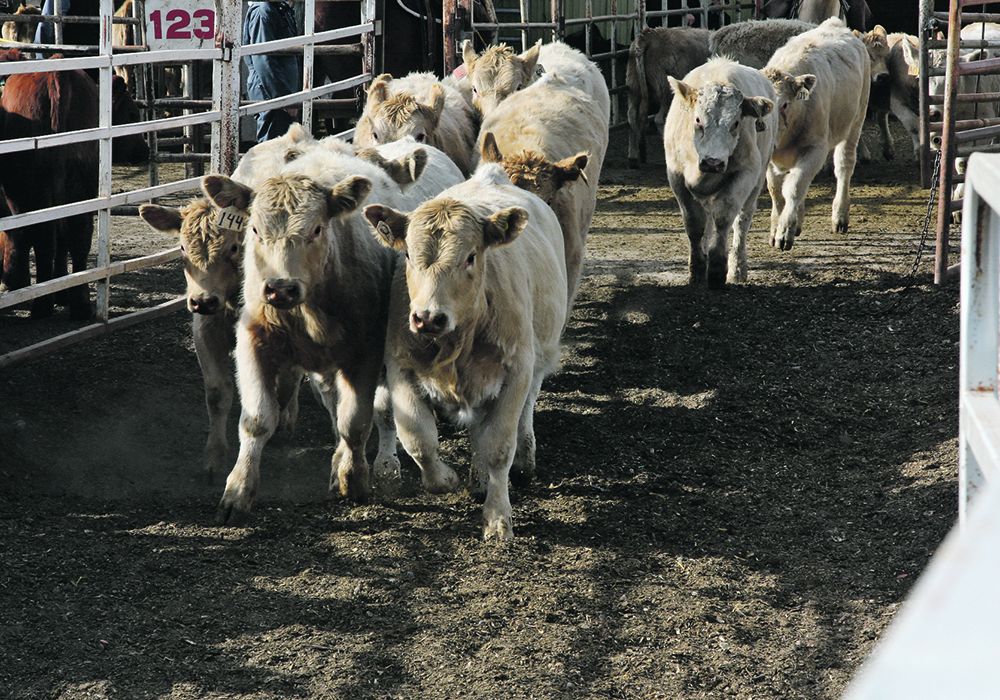Province adds $50 million to a loan guarantee program that makes it easier to buy calves and sheep through feeder associations
The increasing cost of beef calves and sheep has prompted the Alberta government to add $50 million to a provincial program that helps younger producers obtain financing to buy livestock.
The Feeder Association Loan Guarantee Program has been boosted to $150 million for beef and sheep producers, up from $100 million, said Agriculture and Irrigation Minister Nate Horner.
“Cattle have gone up quite a bit in the last decade,” he said during a recent news conference. “So, if you take a young farmer with a static land base that wants to buy 200 head of stocker cattle, they still want to run the same amount of cattle, but it costs twice as much. That’s why the guarantee’s had to grow the way it has.”
Read Also

Canadian Food Inspection Agency red tape changes a first step: agriculture
Farm groups say they’re happy to see action on Canada’s federal regulatory red tape, but there’s still a lot of streamlining left to be done
Producers in feeder associations use the program to secure capital from lenders to buy calves and sheep. The animals are then fed for several months before being sold at market.
Meanwhile, a beef industry competitiveness study that was launched in 2021 will likely be completed between the end of December and the middle of January, Brad Dubeau, general manager of Alberta Beef Producers, said during an interview.
Ranchers have said rising beef prices paid by consumers don’t reflect what producers earn for their cattle at a time of soaring costs for inputs, such as feed and fuel. One of the study’s goals is price transparency, Horner told the news conference.
“That’s what we’re looking to find, what could be done — what levers there are, what policies are available to this government — so, we’re all excited to see (the study). But I haven’t had a preview yet.”
Food security and prices at stores are a priority of the Alberta government, he said.
“And I’m working with my department and cabinet colleagues to ensure Albertans have access to affordable food.”
The Feeder Association Loan Guarantee Program, which was launched in 1936, has guaranteed $11 billion in private financing to Alberta livestock feeders, said the provincial statement.
“The program typically finances 17 to 24 percent of the calf crop each year, providing a significant portion of the lending requirement for the industry.”
It has helped support more than 2,000 family farms, said Reg Schmidt, director for Zone 3 of the Feeder Associations of Alberta. He thanked Horner on behalf of 45 feeder coops across the province for the $50 million increase in the program.
Schmidt told the news conference it will help young farmers and new entrants to the industry obtain “access to capital that they would have no other way of getting to help the long-term sustainability of our industry. The feeder associations play a huge role in maintaining the fabric of rural Alberta.”
Younger producers are essential to the future of agriculture, said Dubeau.
“It’s imperative that we find ways to help support them be a part of the industry because in the end, as those that are in the industry right now are getting older and start to potentially exit the business, we need those younger people coming up behind them,” he said.
“And whether it is through generational farming, or new entrants to the industry, we need to support them. We need them there because it’s all a part of growing or producing our own food in this province and country and being sustainable and being there for the long run.”
Although ABP is leading the beef industry competitiveness study, it also includes the Alberta Cattle Feeders’ Association and the Canadian Meat Council, said Dubeau. Other partners include the Canadian Cattle Association and Canfax as well as the provincial government, with funding provided by the federal-provincial Canadian Agricultural Partnership, he said.
Two large packers in southern Alberta are responsible for about 80 percent of the slaughter of Canada’s beef market. Dubeau said the study will mostly focus on processing resiliency in terms of provincially and to some extent federally inspected plants.
Beef producers are hoping it will provide direction on potential issues ranging from labour shortages at packing plants to reducing government red tape, he said.
“What are some of the barriers to expansion or entry?”
The study will also include suggestions about wholesale reporting, he said, emphasizing he didn’t want processors to feel like they’re being cornered.
“We’re trying to understand better some of the challenges within the processing industry in Alberta.”
Dubeau expects the study will be released sometime after mid-January.
“But we’re all working on it as hard as we can, and to try and finish up the project as quickly as possible. We just need to just make sure that everybody has the input that they deserve to provide.”
















